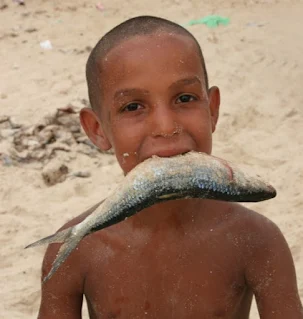Flamingo Bird Watching in Mauritania Banc d'Arguin National Park
North Africa's Mauritania Banc d'Arguin National Park includes one of the top places to visit in Africa for flamingo bird watching.
Banc d'Arguin National Park is a protected area located on the Atlantic coast of Mauritania in West Africa. It was established in 1976 to protect the unique ecosystems of the region, which include extensive sand dunes, coastal beaches, and shallow waters that support a diverse array of marine life.
The park covers an area of approximately 12,000 square kilometers, 1.2 million hectare or 3 million acre and includes a variety of habitats, including seagrass beds, coral reefs, and sandy and rocky shores.
It is home to a wide variety of marine and bird species, including flamingos, pelicans, and terns. The park is also an important breeding ground for several species of migratory birds, including sandpipers, plovers, and terns.
During the winter months, large numbers of waterfowl and shorebirds can be found in the park's wetlands and estuaries.One of the most popular bird species at the Banc d'Arguin National Park is the flamingo.
Specifically, the park is home to both greater flamingos and lesser flamingos, which are both known for their distinctive pink coloration and long, thin legs.
Flamingos are a popular attraction at the park because of their striking appearance and their unique behavior. They are often seen wading in shallow water or feeding on algae and small crustaceans, and their large flocks can be quite impressive to witness.
In addition to its ecological significance, Banc d'Arguin National Park is also an important cultural site.
It is home to several historic settlements, including the former trading post of Arguin, which was established by the Portuguese in the 15th century.
The park is managed by the Mauritanian government in partnership with several international conservation organizations.
Banc d'Arguin National Park is recognized as a UNESCO World Heritage Site, and it is considered one of the most important and unique protected areas in Africa
 |
| North African Green Sea Turtle |
Mauritania's population is concentrated in the cities of Nouakchott and Nouadhibou and along the Senegal River in the southern part of the large mostly desert terrain of the country.
Banc d'Arguin is a vast area of islands, marshes and coastline.
Banc d'Arguin is one of the most important zones in the world for nesting and overwintering birds.
 |
| Mauritania Africa Native Imraguen People |
The very small population of Native Imraguen or “the ones who gather life” people mostly live in seven villages within the parks area.
The Imraguen people are a traditionally nomadic ethnic group that inhabits the coastal region of Mauritania in West Africa, specifically the Banc d'Arguin National Park area.
Fishing techniques are unchanged for the Imraguen including the unique of working with dolphins to catch fish.






